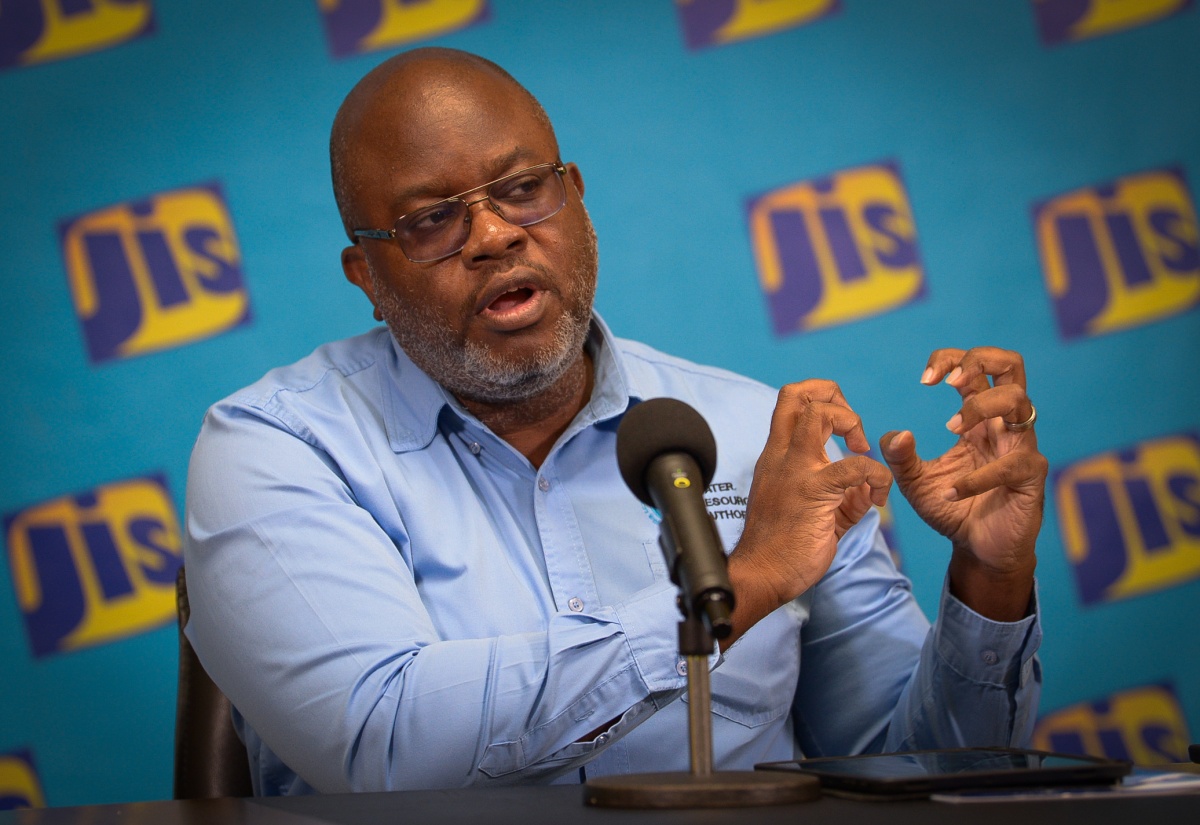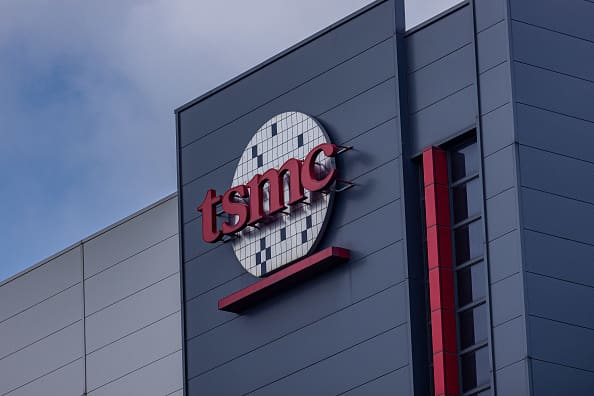By Alex Knapp,Forbes Staff,Simone Melvin
Copyright forbes

In this week’s edition of The Prototype, we look at how the Administration is trying to turn back the technological clock, a startup building giant robot boats, manipulating DNA with electricity and more. To get The Prototype in your inbox, sign up here.
Getty Images
In Isaac Asimov’s epic Foundation series, one sign that the Galactic Empire was in decline was its reliance on fossil fuels instead of more advanced forms of energy. That technological regression was taken as a sign by the book’s characters that scientific expertise was being lost.
That detail came to my mind earlier this week when the Trump Administration announced plans to revive coal power in the United States, including a $625 million package to extend the lifespans of existing power plants. The Administration will continue to process paperwork for oil, gas and coal operations on public lands during the current government shutdown–even as it uses the budget battle as a pretense to cancel over $8 billion in funding for clean energy projects.
Even with the government thumb on the scale, we’re not likely to see a major revival of coal–it’s a 19th century technology that is becoming obsolete. A recent report from investment bank Lazard found that solar and wind power projects are more cost-effective than fossil fuels, even when subsidies are taken out of the equation. Solar and wind projects are more likely to be built on-time and on-budget than other forms of power, too, according to recent findings from Boston University. As long as the market stays free, renewable energy will win the economic race.
Still, the Trump Administration’s attempts to turn back the clock on coal is just one more way it’s threatening America’s scientific and technological leadership. From cancelling research into mRNA treatments to its new high fees on H1B visas driving AI researchers to Europe to many other policies, the United States now faces a future in which may no longer be the preeminent scientific power, Nobel Prize officials told reporters earlier this week.
A Gonzo Plan To Beat China With Giant Robot Boats
Saronic CEO Dino Mavrookas with the robot boat Corsair.
With a potential Taiwan conflict looming—U.S. intelligence says Chinese Premier Xi Jinping wants his military ready to invade by 2027—Washington is on high alert. It’s pushing to expand the Navy and the civilian cargo fleet needed to support a war in the Pacific. President Trump’s “Big Beautiful Bill,” passed in July, includes $29 billion in funding for naval shipbuilding and industrial base revitalization. But the lack of domestic shipyard capacity and workers is a bottleneck that can’t quickly be overcome.
Saronic is one of a growing number of defense startups pitching the Pentagon on a different approach: mass-producing small, cheap, autonomous vessels that can operate in swarms—patrolling and resupplying without risking human lives. If one gets lost, it’s no big loss.
Saronic is the best-funded of the bunch. In February, it raised $600 million at a $4 billion valuation from backers including Elad Gil and Andreessen Horowitz, bringing its total funding to $850 million—more than triple that of its closest competitor, Saildrone, according to PitchBook.
In May, Saronic won another measure of validation that separates it from the pack – a Navy contract worth up to $392 million that appears to be for Corsair, a 24-foot boat that the company says costs less than $2 million. The award tops competitor BlackSea, which says it’s churning out 30 16-foot robot boats a month under a contract worth up to $212 million.
Saronic says it’s starting to build Corsair at volume. It’s turned out more than 100 at its Austin factory since building the first 14 months ago, and is now producing them at a rate of 500 a year. And it’s preparing to open a bigger factory in November that will quintuple that number.
Read more at Forbes.
DISCOVERY OF THE WEEK: MANIPULATING DNA WITH ELECTRICITY
Researchers at Canada’s McGill University built a device that uses electric fields to manipulate DNA molecules without damaging them. Typically, DNA is moved around using mechanical means, which can cause the molecules to break. The new method might improve things like simulating cell environments in the lab, which could lead to better disease diagnostics or medicines.
WHAT ELSE I WROTE THIS WEEK
Amy Feldman and I wrote about how Pfizer got the better end of the deal it made with the Trump Administration to lower some drug prices in exchange for a tariff reprieve, and why it’s a model other drug companies might follow.
In my other newsletter, InnovationRx, Amy Feldman and I looked at Trump’s plans to sell cheap drugs to Americans, the Haitian immigrant who built a $6 billion company treating brain diseases, a startup industrializing DNA synthesis, and more.
SCIENCE AND TECH TIDBITS
Startup Axiom Math raised $64 million in investment to develop an AI model that can solve complex mathematical problems and generate detailed proofs of its answers.
Investment manager Vanguard worked with IBM to use a hybrid of quantum computing and conventional algorithms to build optimized investment portfolios, which the companies say outperformed those built with a purely classical computing approach.
Greenlight Biosciences has launched an RNA-based pesticide that targets varroa mites, one of the leading causes of mass death in honeybee colonies.
A new analysis of data from the Cassini space probe has found signs of complex organic molecules on Saturn’s moon Enceladus, which may indicate life exists there.
Scientists at Oregon Health and Science University used DNA from skin to create egg cells that could be fertilized and turned into human embryos.
PRO SCIENCE TIP: WANT TO DISRUPT SCIENCE? PUT YOUNG RESEARCHERS ON YOUR TEAM
Teams that develop the most disruptive research have a large proportion of young scientists. That’s the conclusion of a new study, which has not yet been peer-reviewed, that examined 28 million papers published over the course of five decades. The study found that papers with a larger fraction of authors who had never published before tended to be more innovative–opening up new research paths while making previous work less influential over time. This appears to be a universal phenomenon, as it was consistent across the decades studied as well across multiple scientific disciplines.
WHAT’S ENTERTAINING ME THIS WEEK
Last week I caught the great Iggy Pop in concert, which was an electrifying show. See him if you get the chance. But you don’t need me to tell you who Iggy Pop is, so let me instead praise his opening act, The Molotovs, fronted by siblings Mathew and Issey Cartlidge. Still in their teens, they sound and play like they time travelled from 1977, putting on a stellar performance of original, fast-paced songs plus an amazing cover of David Bowie’s “Suffragette City.” Their debut album releases in January and I can’t wait to give it a listen. You can check out their first single, “More, More, More” here.
MORE FROM FORBES
ForbesMeet The 30 Under 30 Software Wunderkind Taking On AirbnbBy Simone MelvinForbesFormer Energy Secretary’s Startup Mints Three Billionaires Despite No RevenuesBy Kyle Khan-MullinsForbesThis Haiti-Born Doctor Built A $6 Billion Business Developing Drugs For Depression And Alzheimer’sBy Amy Feldman
Got a tip? Share confidential information with Forbes.
Editorial StandardsReprints & Permissions



